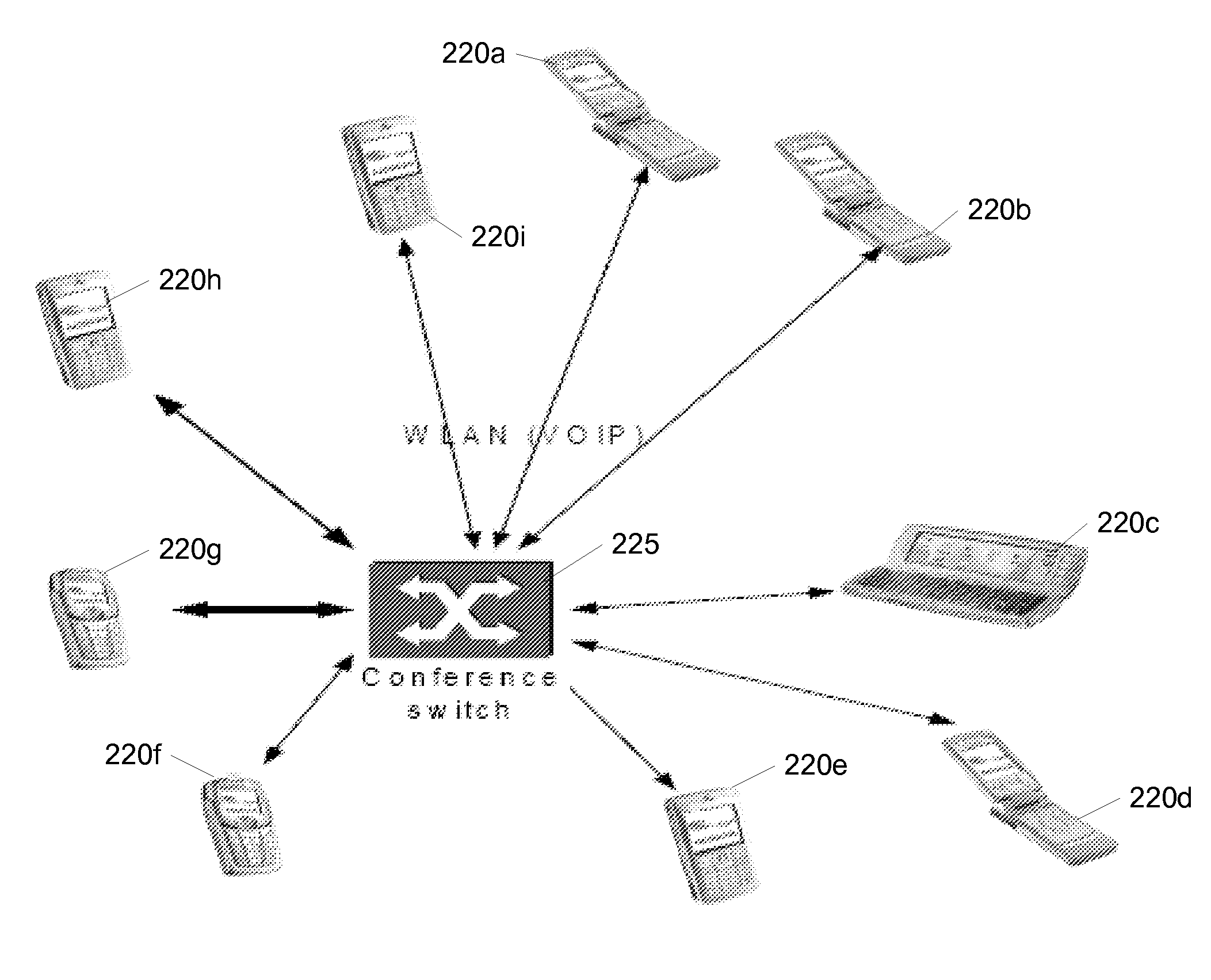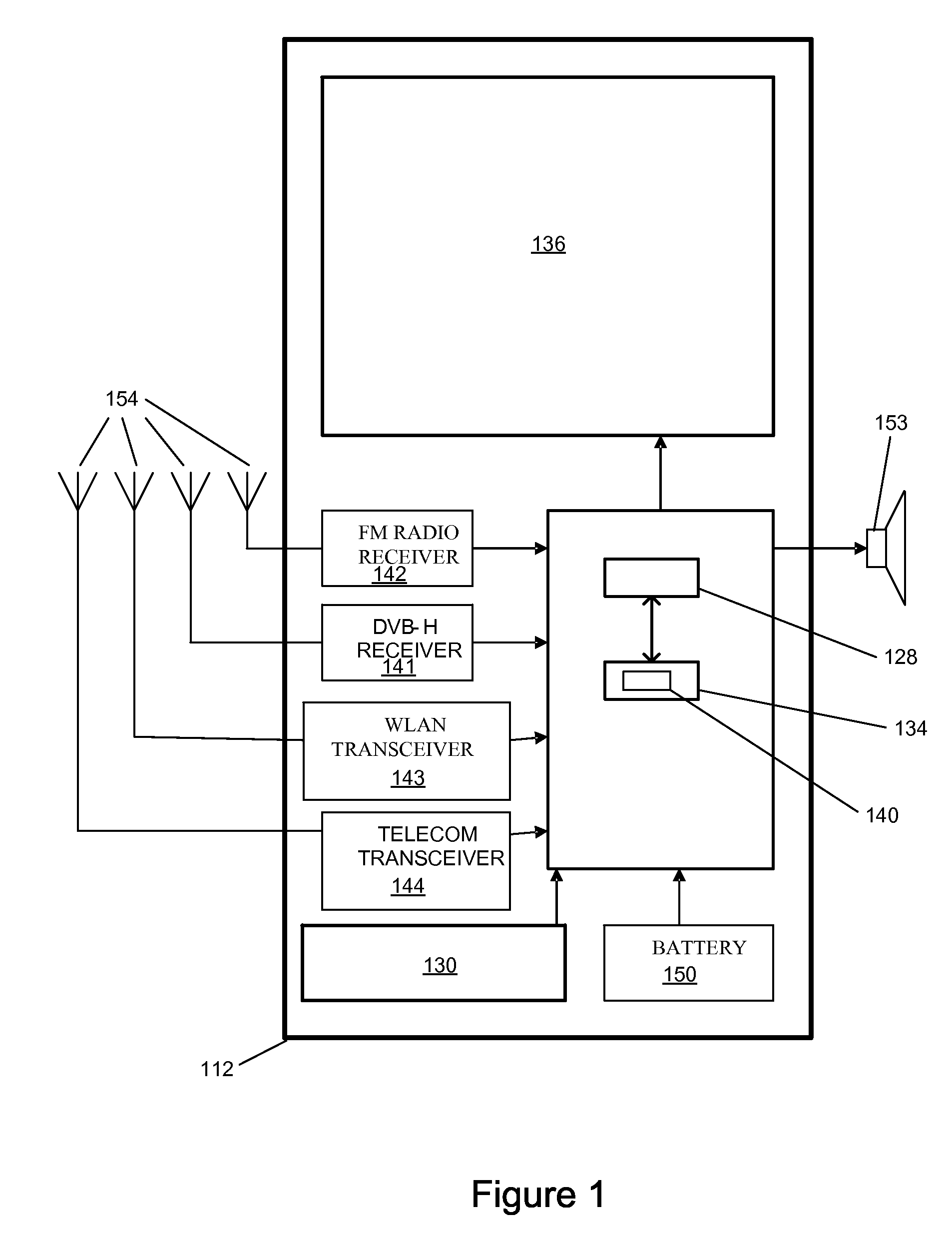Teleconference group formation using context information
a technology of context information and teleconference group, applied in the direction of data switching network, broadcast service distribution, instruments, etc., can solve the problems of audio processing, feedback and other anomalies, and the inability to compensate for this organization of terminals, so as to reduce audio feedback
- Summary
- Abstract
- Description
- Claims
- Application Information
AI Technical Summary
Benefits of technology
Problems solved by technology
Method used
Image
Examples
Embodiment Construction
[0017]In the following description of various illustrative embodiments, reference is made to the accompanying drawings, which form a part hereof, and in which is shown, by way of illustration, various embodiments in which the invention may be practiced. It is to be understood that other embodiments may be utilized and structural and functional modifications may be made without departing from the scope of the present invention.
[0018]FIG. 1 illustrates a block diagram of a terminal including processor 128 connected to user interface 130, memory 134 and / or other storage, and display 136. Mobile terminal 112 may also include battery 150, speaker(s) 153 and antennas 154. User interface 130 may further include a keypad, touch screen, voice interface, one or more arrow keys, joy-stick, data glove, mouse, roller ball, touch screen, or the like. Mobile terminal 112 may comprise a computer, personal data assistant (PDA), mobile telephone and the like.
[0019]Computer executable instructions and...
PUM
 Login to View More
Login to View More Abstract
Description
Claims
Application Information
 Login to View More
Login to View More - R&D
- Intellectual Property
- Life Sciences
- Materials
- Tech Scout
- Unparalleled Data Quality
- Higher Quality Content
- 60% Fewer Hallucinations
Browse by: Latest US Patents, China's latest patents, Technical Efficacy Thesaurus, Application Domain, Technology Topic, Popular Technical Reports.
© 2025 PatSnap. All rights reserved.Legal|Privacy policy|Modern Slavery Act Transparency Statement|Sitemap|About US| Contact US: help@patsnap.com



